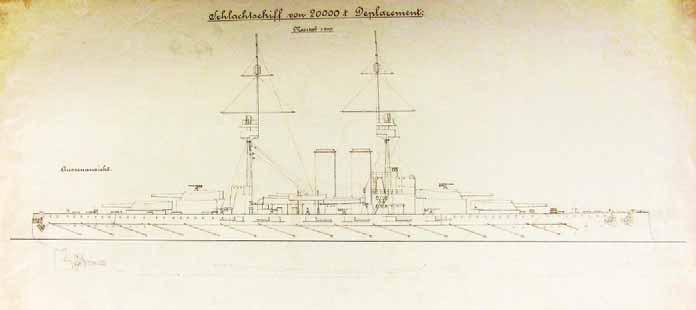607 Ships were identified using different handbooks. Misidentification was not uncommon during the war, the most well known example in the Austro-Hungarian Navy was the misidentification of the approaching British cruisers during the initial phase of the Battle of the Otranto Straits on 15 May 1917. 608 Maybe this is a typing error, 16,000 m is more realistic. The maximum range of the 30.5 cm guns was around 19,000 m, while the range dials of the gun sights were graduated to 15 degrees. KA MS MTK Res Nr. 1139/III ex 1912. The initial range on the gunnery trial of the Szent István was 15,200 m which was soon reduced to 10,000 m. KA MS/II GG 47D/2 46 ex 1916. The short randefinders of these battleships were inaccurate at ranges over 10,000 m.
609 NA ONI Register No. 3882 R-2-b. 610 KA MS/II GG 47D/2 46 ex 1916. 611 Attila József: “And so I’ve found my native country,/that soil the gravedigger will frame,/ where they who write the words above me/ do not for once misspell my name. This black collection-box receives me/(for no one needs me any more),/this Iron Six was worth twenty,/this coin left over from the war.” Translated by Frederick Turner and Zsuzsanna Ozsváth. 612 The only active-duty officer whom was ever given this rank was Anton Haus (1916). The other Großadmirals were the members of the Habsburg and the Hohenzollern families. 613 This rank was given only to reserve officers. Professional officers were promoted after their successful exam to Fregattenleutnant.
Bibliography 3 maj. Složena organizacija udruženog rada brodograđevne industrije Rijeka. Rijeka, 1984. Aichelburg, Wladimir – Baumgartner, Lothar: Die „Tegetthoff ”-Klasse: Österreich-Ungarns grösste Schlachtschiffe. München, 1981. Balla, Tibor: A militarista birodalom mítosza. Az osztrák-magyar haderő az első világháború előestéjén. Hadtörténelmi Közlemények 2014/3 Balla, Tibor: Szövetségesből háborús ellenfél. Olaszország 1915. májusi hadba lépésének katonapolitikai előzményei és körülményei Hadtörténelmi Közlemények 2015/3 Balla, Tibor: The Activities of the International ‘Scutari Detachment” in 1913-1914. In: Csaplár-Degovics, Krisztián (Edited by): “These were hard times for Skanderbeg, but he had an ally, the Hungarian Hunyadi”. Episodes in Albanian-Hungarian Historical Contacts. Budapest, 2019. Balogh Tamás: Jelentés a „Szent István” csatahajónál 2008. szeptember 30. és október 5. között lefolyt expedíció eredményeiről. Manuscript, 2008. Balogh Tamás – Csepregi Oszkár: A Szent István csatahajó és a csatahajók rövid története Budapest, 2002. Bánsági Andor: A SZENT ISTVÁN csatahajó elsüllyedése dokumentumok tükrében.
Hajózástörténeti Közlemények 2008/3 www. kriegsmarine.hu/hk/ba00802f.html Baratelli, Franco: La marina militare italiana nella vita nazionale 1860-1914. Mursia, 1983. Baumgartner, Lothar – Pawlik, Georg – Sieche, Erwin F.: Die „Radetzky”-Klasse. Graz, 1984. Branfil-Cook, Roger: Torpedo: The Complete History of the World’s Most Revolutionary Naval Weapon. Barnsley, 2014. Denn Österreich Lag einst am Meer. Das leben von Admirals Alfred von Koudelka. Graz, 1987. Dombrády Lóránt – Germuska Pál – Kovács Géza – Kovács Vilmos: A magyar hadiipar története, Budapest, 2016. Fanta, Karl: Die österreichisch-ungarische Kriegsmarine im Ersten Weltkrieg: Eine kritische untersuchung der Logistik und ihres Zusammenhang mit der k. u. k. Flottenstrategie. Ph. D. thesis, Universität Wien, 1997. Foerster, Wolfgang: Die deutsch-italianische Militärkonvention. In: Die Kriegsschuldfrage Vol. 5 (1927) Issue 5 Friedman, Norman: Naval Weapons of World War One. Annapolis, 2011. Gebhardt, Louis A. Jr.: The Development of the Austro-Hungarian Navy, 1897-1914, A Study in the Operation of Dualism. Ph. D. dissertation, Rutgers University, 1965.
— 193 —






























